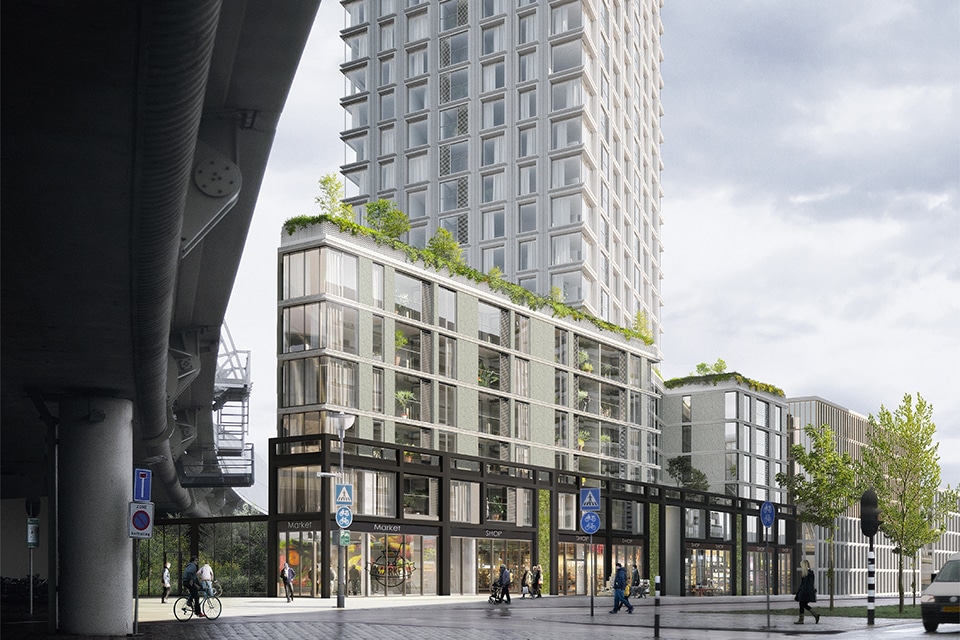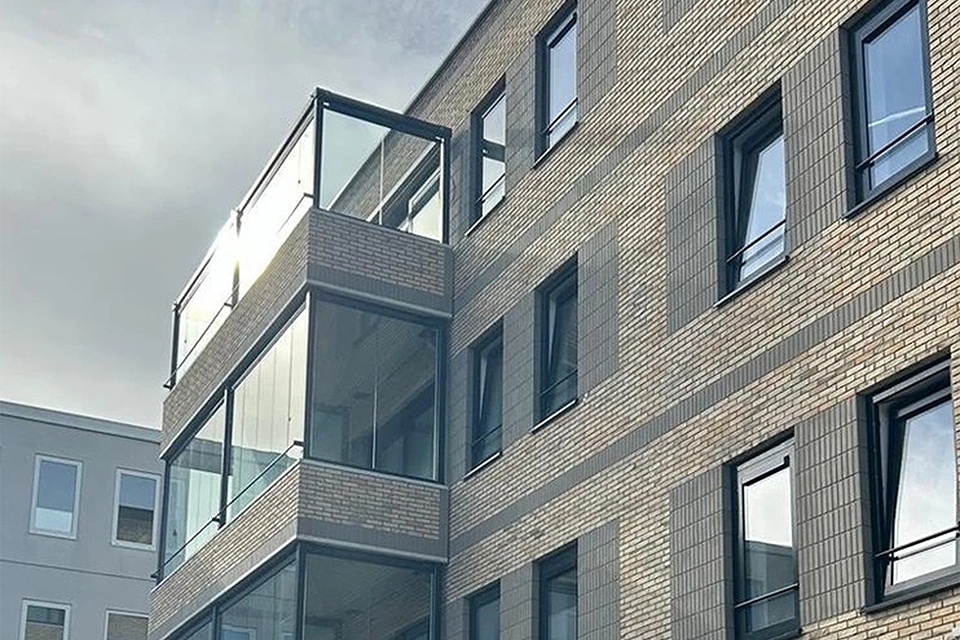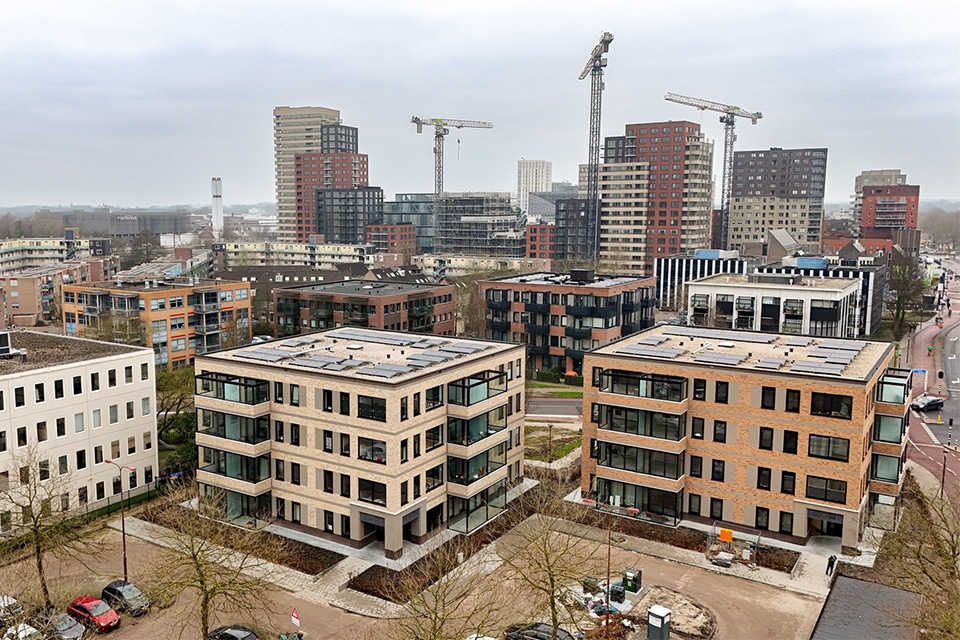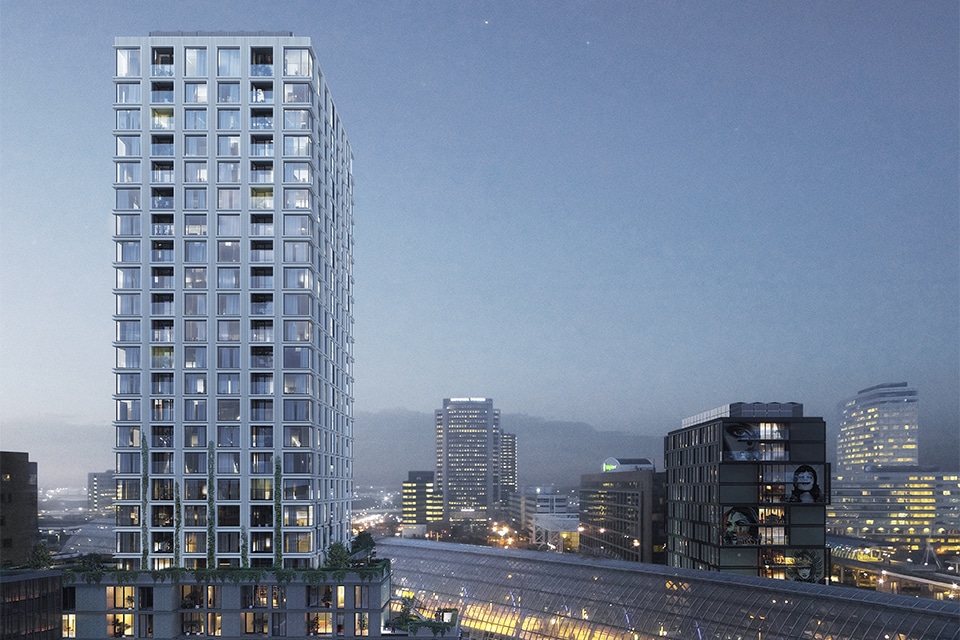
Crossroads Amsterdam: a new dimension in urban transformation
In the heart of Sloterdijk, Crossroads is coming to life: a project that will not only change the skyline of Amsterdam, but also the way Amsterdammers live, work and live together in the city. MVSA Architects is behind this innovative design. "This was a challenging project, but we succeeded. Partly thanks to the efforts of all parties involved," said Roberto Meyer, architect and founder of MVSA Architects.
MVSA Architects is known for its innovative, future-oriented designs. The firm combines architecture and urban planning with a focus on sustainability and livability. "We are always looking at how we can integrate innovations into our designs," Meyer explains. From museums to offices and homes to complete urban plans, MVSA works on impactful projects.

Pioneers in sustainable urbanism
With iconic designs such as Wonderwoods in Utrecht and The Pulse on the Zuidas, MVSA has built a reputation in sustainable architecture. "For us, it's not just about the building, but about the whole environment. How does the design affect the city? And how can we encourage biodiversity and improve livability?"
Crossroads: a hub of functions and connection
Crossroads is a vibrant urban hub. It is a complex of two towers on a shared plinth, including a residential tower and a student tower. Located directly next to Sloterdijk Station, it forms an important link in the transformation of this former office area into a dynamic urban district. The complex consists of 360 rental apartments, a supermarket and a green outdoor space with collective gardens. Meyer says it was a complex task: "The location is challenging, with infrastructure, noise standards and limited space. Yet here we have created a building that makes optimal use of its surroundings." Crossroads' residential tower is 90 meters high and fits perfectly into the urban context. The design takes noise and wind into account. "The corners of the building are made of glass, which provides beautiful views of the city. This view extends so far that you can even see the dunes."
Sustainability and greenery in the city
Crossroads is a paragon of nature-inclusive building. Green terraces and roof gardens are integrated everywhere: an oasis in the urban landscape. "Sustainability goes without saying for us," Meyer says. "We involved a biologist in the design and looked at biodiversity, water collection and energy use. These are elements that come standard in our projects." Social sustainability also plays a role. With a mix of medium-rent, social-rent and free-sector housing, Crossroads contributes to a diverse housing supply in Amsterdam. "Affordable housing is badly needed. This project helps relieve some of the pressure on the housing market and we are happy to contribute to that. This problem requires joint efforts."
A new future for Sloterdijk
Crossroads is not only an architectural masterpiece, but also an urban innovator in the development of Sloterdijk. The project brings life to an area long dominated by offices. The combination of living, working and recreation makes the neighborhood attractive and accessible. "Sloterdijk is in transition. We are happy to contribute to that," Meyer said. "We hope that Crossroads not only becomes a nice place for residents, but also has a positive impact on how people experience the city. We remain committed to that."



